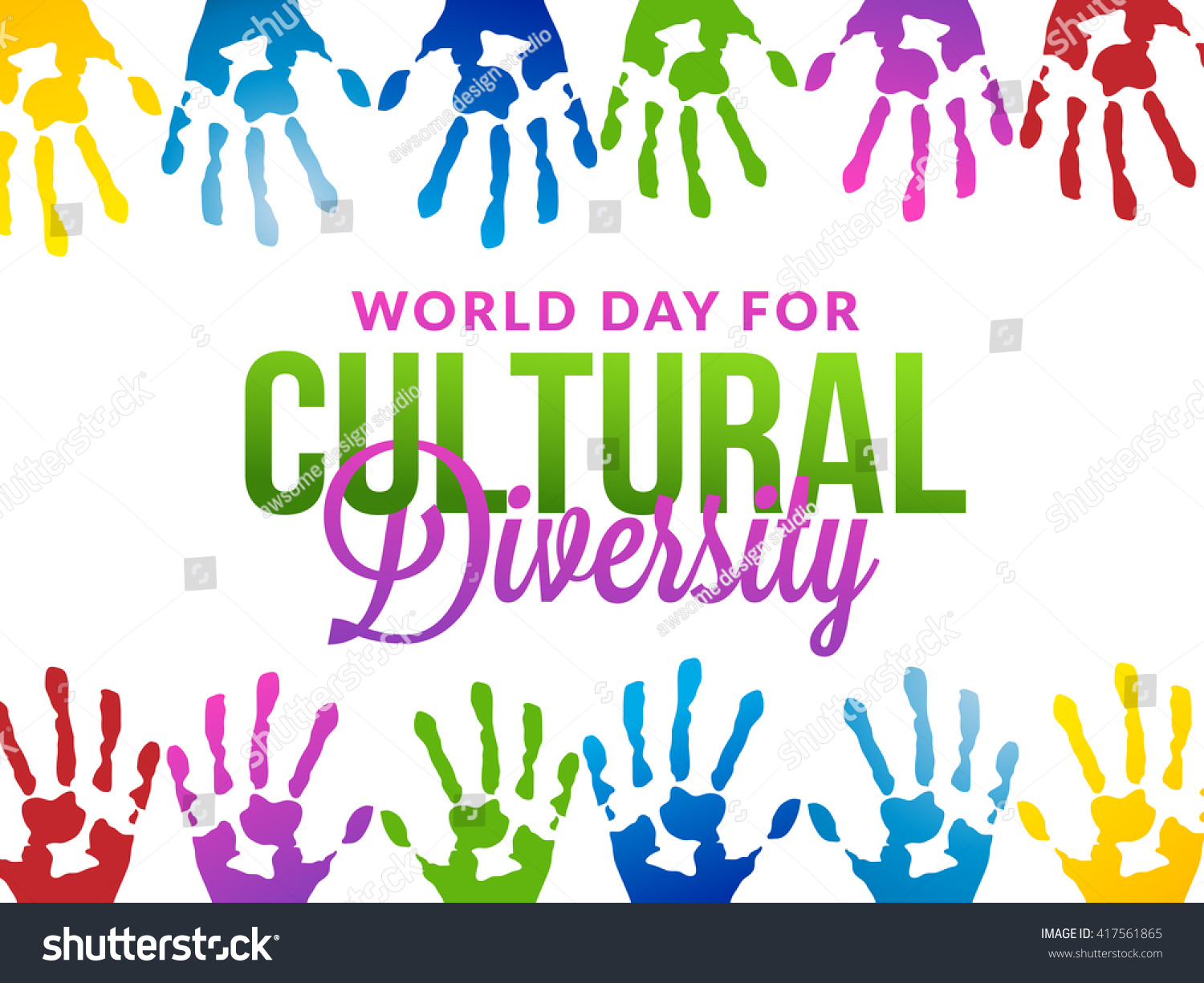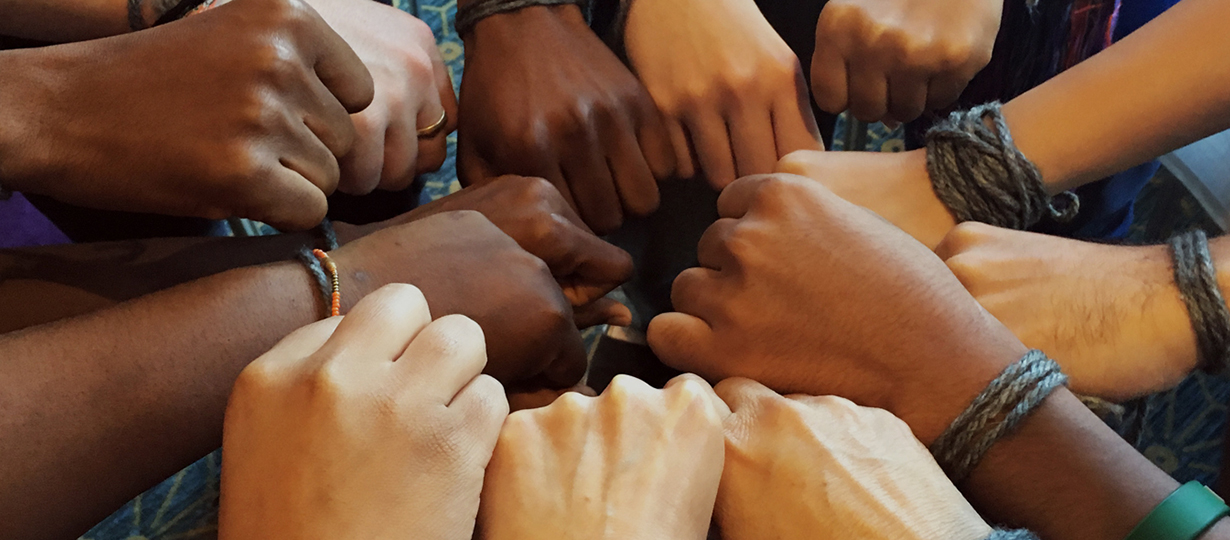Have you ever stopped to consider the symphony of cultures that make up our world? From the vibrant melodies of Bollywood music to the captivating rhythms of African drumming, from the delicate brushstrokes of Chinese calligraphy to the intricate patterns of Indigenous weaving, the human experience is a rich tapestry woven from countless threads of cultural heritage. This tapestry, with its diverse textures and colors, is celebrated each year on May 21st – World Day for Cultural Diversity for Dialogue and Development. This day, established by the United Nations, serves as a poignant reminder of the immeasurable value of cultural diversity and its role in fostering understanding, peace, and sustainable development.

Image: www.shutterstock.com
Cultural diversity, much like the natural world, thrives on interconnectedness. It’s not just about appreciating the differences that exist between various cultures; it’s about recognizing the interconnectedness of all cultures and their shared humanity. It’s about embracing the unique perspectives, traditions, and practices that contribute to the richness and complexity of our world, and acknowledging the vital role that cultural exchange plays in shaping our global community.
The Symphony of Cultural Diversity
A Tapestry of Traditions
Cultural diversity is a kaleidoscope of traditions, beliefs, and practices that have evolved over millennia, shaping the unique identities of different communities around the world. From the intricate rituals of ancient civilizations to the modern art forms that redefine contemporary expressions, each culture offers a unique window into the human experience.
For instance, the vibrant festival of Holi in India celebrates the triumph of good over evil with joyous colors and playful revelry, while the solemn observance of Ramadan in the Muslim world fosters introspection and spiritual connection. The intricate patterns on traditional Navajo rugs in the United States tell stories of ancestral wisdom and connection to the land, while the elaborate dances of the Maori people in New Zealand embody their deep respect for the natural world.
The Power of Language
Language, the foundation of communication, is a powerful symbol of cultural identity and a key contributor to diversity. It’s more than just a means of exchanging information; it’s a window into the soul of a culture, reflecting its history, values, and worldview.
Just as a single note can create a distinct melody, each language carries unique sounds, grammar, and syntax, shaping the nuances of human expression. Consider the delicate tones of Mandarin Chinese, the melodic flows of Spanish, or the guttural clicks of Xhosa – each language offers a distinct rhythm and cadence, shaping how thoughts and emotions are conveyed.

Image: www.plan.org.au
The Art of Expression
Cultural diversity is evident in the myriad art forms that grace our world, from the majestic sculptures of ancient Greece to the vibrant murals of modern Mexico. Art transcends language, resonating with the human spirit through its ability to evoke emotions, tell stories, and challenge perspectives.
Each art form, whether it be painting, music, dance, or theater, offers a unique lens through which to explore cultural values, beliefs, and experiences. The intricate details of a Japanese woodblock print convey a deep respect for nature and attention to detail, while the rhythmic beats of African drumming pulsate with energy and connect communities through shared musical expression.
A Feast for the Senses
Culinary traditions are an integral part of cultural diversity, offering a tantalizing journey for the senses. Each culture boasts its own unique array of flavors, ingredients, and cooking methods, reflecting local ingredients, historical influences, and ingrained culinary traditions.
From the aromatic spices of Indian cuisine to the delicate flavors of Japanese sushi, from the hearty stews of European kitchens to the rich textures of Mexican mole, each dish tells a story about the land, people, and history that shaped it. Food is more than sustenance; it’s a symbol of cultural identity, a shared experience, and a potent reminder of the richness that diversity brings to our collective table.
The Importance of Cultural Diversity
Fostering Understanding
Cultural diversity is not merely a beautiful tapestry; it’s a vital force for promoting understanding, empathy, and peace. By engaging with different cultures, we expand our perspectives, challenge our preconceived notions, and learn to see the world through diverse lenses. This process helps break down stereotypes, fosters mutual respect, and paves the way for open dialogue and collaboration.
Take, for instance, the work of organizations like the United Nations Educational, Scientific and Cultural Organization (UNESCO), which actively promotes cultural exchange and intercultural dialogue through initiatives that foster understanding and appreciation of different cultures. Through programs like the World Heritage List, UNESCO recognizes sites of outstanding cultural and historical significance, fostering global awareness and preservation of heritage.
Driving Innovation
Cultural diversity is not just about preserving traditions; it’s a catalyst for innovation and progress. By incorporating diverse perspectives, experiences, and ideas, we unlock new ways of thinking, creating, and solving problems. This creative energy fuels innovation in fields like science, technology, art, and business.
The rise of global corporations and the increasing interconnectedness of the world’s economies demonstrate the power of cultural diversity in driving innovation. Companies that embrace diversity in their leadership and workforce often find themselves better positioned to understand diverse markets, tap into new talent pools, and develop products and services that resonate with a wider audience.
Promoting Sustainability
Cultural diversity is intrinsically linked to sustainable development; it represents a wealth of knowledge and practices that can contribute to environmental preservation, social justice, and economic prosperity. Indigenous communities, for instance, have long practiced sustainable living methods that harmonize with nature, offering valuable lessons in resource management and conservation.
By respecting and learning from the wisdom embedded in different cultures, we can unlock solutions to global challenges, including climate change, poverty, and inequality. This approach, rooted in the principles of cultural sensitivity and mutual respect, ensures that development initiatives are inclusive and sustainable, benefiting diverse communities and safeguarding the planet.
Bridging the Cultural Divide
Embracing Global Citizenship
In an increasingly interconnected world, embracing global citizenship is paramount. It means recognizing that we are all members of a global community, bound by shared values and responsibility. It means understanding that cultural diversity is not just a celebration of differences; it’s a foundation for building a more peaceful, equitable, and sustainable future.
Celebrating Cultural Expression
World Day for Cultural Diversity is not just a date on the calendar; it’s an invitation to embrace the richness of our shared human experience. It’s an opportunity to celebrate the beauty, resilience, and wisdom enshrined in different cultures. We can do this by attending cultural events, supporting local artists, engaging in intercultural dialogue, and amplifying the voices of diverse communities.
Promoting Inclusivity
True celebration of cultural diversity requires fostering inclusion and ensuring that everyone has a voice and a place in society. It means challenging discrimination, promoting equal opportunities, and creating spaces where people from diverse backgrounds can thrive.
Leveraging Technology
Technology offers unprecedented opportunities to bridge cultural divides. We can access information about different cultures in an instant, connect with people from all over the world, and participate in virtual cultural exchanges. Let’s harness these tools to foster understanding, promote dialogue, and celebrate the richness of our diverse world.
World Day Of Cultural Diversity
Conclusion
The tapestry of cultural diversity is a testament to the ingenuity, resilience, and creativity of the human spirit. It is a reminder of our shared humanity and the boundless potential we have to learn, grow, and build a more harmonious world. By embracing cultural diversity, we not only celebrate the richness of our shared heritage but also equip ourselves to address the challenges and opportunities of an interconnected future. Let’s continue to weave a tapestry of understanding, peace, and sustainable development, one thread of cultural diversity at a time.
May World Day for Cultural Diversity inspire us to celebrate the mosaic of cultures that make our world so vibrant and to foster a future where diversity is embraced, celebrated, and celebrated. Let’s use this day to recognize the contributions of diverse cultures and to reaffirm our commitment to building a more inclusive and equitable world.






